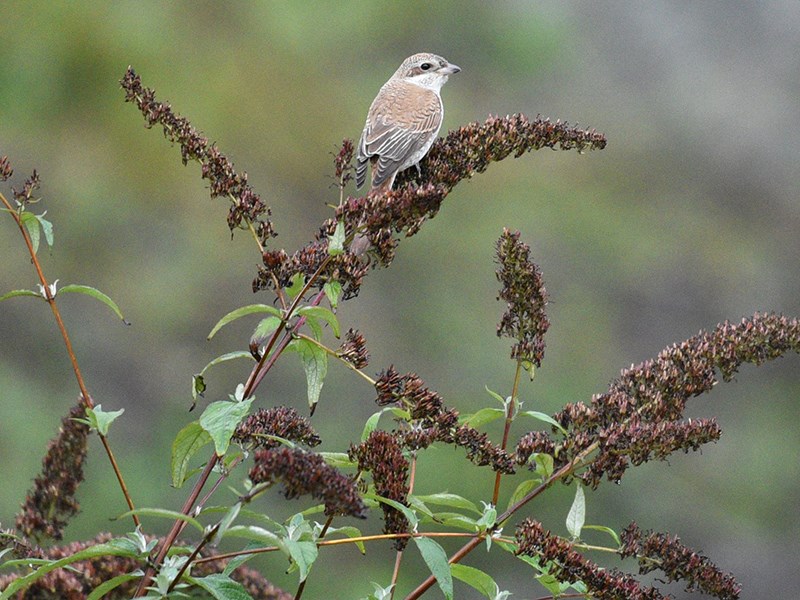Powell River birder Iwan van Veen had the find of a lifetime when he discovered a red-backed shrike along the hydro lines near Fernwood Avenue last week.
This is the first sighting of the red-backed shrike in Canada, and only the second time it has been spotted in North America.
According to van Veen, the shrike is six to seven inches long and a carnivorous, migratory bird. Its normal breeding range stretches from western Europe and eastward to central Russia. It usually winters in the eastern areas of tropical Africa and southern Africa. Clearly, it took a wrong turn somewhere.
van Veen is passionate about birds and his new discovery.
“Basically, if you’re a birder, every time that you’re out, you’re birding,” said van Veen. “You are either listening or you’re seeing birds. It’s kind of what you do.”
He said that on October 22, he was on his lunch break and decided to take a break outside.
“I just went for a couple of minutes and I saw a bird sitting in a little bush and I thought: that’s a weird bird, I’ve never seen that before in Powell River,” said van Veen. “It kept nagging at me so I called some of my birder friends in Powell River that night and said I had seen this bird and it reminded me of a shrike, but I was not sure.
“I decided to go back the next day and see if I could find it. I went back and almost in the same spot I was able to see it again and took a quick picture with my small camera that showed some distinct markings that it could be a brown shrike.”
That would be rare for Canada, said van Veen, as there has been one sighting of a brown shrike in Victoria last year. However, he sent the photograph off to some experts and they looked at it.
“They were excited and they were already booking ferries from Vancouver and from Victoria,” said van Veen. “We birders we kind of collect birds, so every time we see a bird we haven’t seen before we like to put it on our list.”
After having taken some pictures earlier in the day with his small camera, van Veen went back with a camera that is more in keeping with getting photographs of small birds. He said he uses Nikon equipment with a 200 to 500 mm zoom lens to get great images.
“I was able to refind the bird and get some very good pictures from the front and the back and those pictures showed that instead of being a brown shrike, it could be a red-backed shrike,” said van Veen. “It would be even more rare because it has never been reported in Canada before. The only other time it was seen in the North American birding area was in 2017 on St. Lawrence Island in Alaska, which is closest to Siberia.”
Bird experts from Asia, Europe and Africa weighed in and confirmed it was a red-backed shrike. When word got out, people came to Powell River for the weekend from Victoria, Nanaimo and the Lower Mainland to see if they could see the bird.
“So far, we’ve been successful,” said van Veen.
The bird had been sighted over the weekend and on October 26, so it has been seen by a number of people, according to van Veen. He added that were it not for COVID-19, he would have expected birders from the United States to have travelled to see the red-backed shrike.
He said that as a birder, one of the things that he hopes is that he can find a rarity.
“If you are able to find a first for Canada, and the first for the continental mainland for North America, that’s pretty exciting,” said van Veen. “It puts Powell River in the history books. This will be discussed for a long time and will show up in publications. It definitely puts Powell River on the birding map.”
van Veen has been an active birder for about 10 years. He said he likes birding for his own relaxation.
“I like to go for a hike and see what birds I can spot along the way,” said van Veen. “When I’m on vacation, I will bird there. I’m not one who travels a bunch of miles to tick off my list.”
He has a good selection of photographs of birds and said that for most of the species he has seen, he has pictures. Clearly, his latest set of photos are his rarest.


